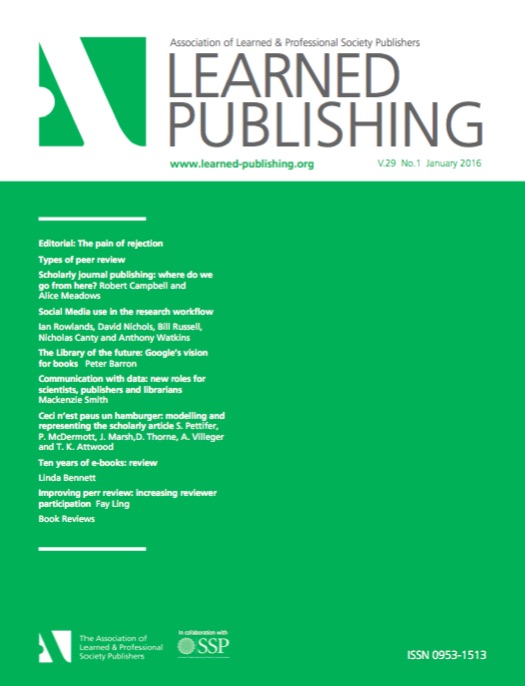![]() The ORCID iD, a persistent identifier for people, has been widely adopted by academic researchers, with over 3 million live ORCID iDs registered as of February 2017. For researchers, ORCID iDs ensure they get appropriate credit for their work; for the entities that fund research, iDs allow tracking the research outputs of grant recipients, a major factor in determining how effectively grants are converted into published research. For these and other reasons, many scholarly publishers are now encouraging or even requiring authors to include ORCID iDs with their manuscript submissions.
The ORCID iD, a persistent identifier for people, has been widely adopted by academic researchers, with over 3 million live ORCID iDs registered as of February 2017. For researchers, ORCID iDs ensure they get appropriate credit for their work; for the entities that fund research, iDs allow tracking the research outputs of grant recipients, a major factor in determining how effectively grants are converted into published research. For these and other reasons, many scholarly publishers are now encouraging or even requiring authors to include ORCID iDs with their manuscript submissions.
But here’s the thing: how you collect ORCID iDs is almost as important as whether you collect them! In order to comply with the best practices laid out in the the Open Letter on Requiring ORCID in Publication Workflows, publishers must collect authenticated ORCID iDs from authors at submission and keep them authenticated throughout the workflow until they are ultimately deposited with Crossref. This means, among other things, that the iDs included in an article’s XML metadata can’t simply be generated from an author-submitted Word file, or copied and pasted from an online submission system. And what if the iD doesn’t match what’s in the manuscript file?
 What to do? In “Keeping It Authentic: Reconciling ORCID iDs Gathered at Submission with the Author Manuscript,” upcoming in Learned Publishing, Inera’s Robin Dunford and Bruce Rosenblum lay out the challenges of collecting and preserving authenticated ORCID iDs through the peer review and production workflow, and explain how eXtyles ORCID Integration Suite helps journal publishers navigate these challenges to create a seamless workflow for authenticated ORCID iDs!
What to do? In “Keeping It Authentic: Reconciling ORCID iDs Gathered at Submission with the Author Manuscript,” upcoming in Learned Publishing, Inera’s Robin Dunford and Bruce Rosenblum lay out the challenges of collecting and preserving authenticated ORCID iDs through the peer review and production workflow, and explain how eXtyles ORCID Integration Suite helps journal publishers navigate these challenges to create a seamless workflow for authenticated ORCID iDs!